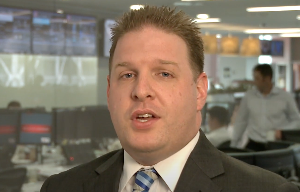by Sally Lindsay

The housing market has already turned down sharply, with sale prices dropping 2.6% since November and sales numbers now running at below pre-pandemic levels.
That’s important as the housing market is a key influence on households’ wealth and their willingness to spend, and ultimately the extent of demand-side inflation pressures, says Westpac acting chief economist Michael Gordon. “That in turn could affect the extent of OCR hikes that will be needed to keep inflation in check.”
“The downturn in the housing market has been compounded by a tightening in loan-to-value limits since November, and changes to the CCCFA (or more accurately the Responsible Lending Code) which came into effect from December,” he says.
Following that tightening in lending conditions, new mortgage lending has fallen sharply, dropping by an estimated 9% in December - after adjusting for normal seasonal variations.
With mortgage rates set to continue rising over the coming year, Gordon expects a further cooling in the housing market, with prices expected to drop by 5% over the course of this year.
“While that is a stark turnaround, the expected price declines would only reverse a small portion of the gains seen in recent years, meaning that housing affordability is set to remain stretched relative to incomes.”
No oversupply
The closure of the country’s borders has seen population growth plummet at the same time as home building is hitting record levels. As a result, the shortages that built up in recent years are now being rapidly eroded.
Gordon says even with a strong outlook for home building, this doesn’t signal that a period of “oversupply” is on the cards.
Between 2015 and 2020 New Zealand’s population grew by about 11%. Over that same period housing stock only increased by 7%. That left the country with about 59,000 too few homes. Shortages of housing have been most pronounced in Auckland. However, they have become increasingly widespread across the country.
The huge imbalance between population pressures and housing supply that developed over the past decade is now undergoing a rapid transformation in the wake of Covid-19.
“Over the past year alone, the shortfall of housing has fallen by about 29,000 homes. And looking to the next few years, further big changes in both housing demand and supply are on the cards,” says Gordon.
While home building activity is booming, population growth has plummeted. In the year to September 2021, the population grew by just 0.5% - well down on the rates of about 2% in the years leading up to the Covid outbreak.
Between 2015 and 2020 net migration averaged about 60,000 people a year. But since the Covid outbreak, that situation went into reverse with the country recording a net outflow of 4,000 people. And while net migration will eventually pick up again when the borders reopen, Gordon is not expecting a return to the sorts of levels seen over the past decade with the Government having previously signalled its intention to tighten entry requirements.
The closure of the borders has had a particularly stark impact on Auckland, with the region’s population actually falling slightly over the past year. Auckland has been grappling with a growing shortage of housing for the better part of a decade. Gordon says with building activity in the country’s largest city now charging ahead, that shortage of homes is on track to be eliminated by the end of next year.
In other parts of the country, population growth has not fallen to the same extent. As a result, housing shortages in areas outside of Auckland are being eroded more gradually. “Even so, elevated levels of home building mean housing shortages are on track to be largely eliminated by the middle part of this decade,” says Gordon.
He says home building activity will remain elevated for some time. That’s because of the strong financial incentives for developers to bring new projects to market: while residential building costs have increased by about 50% since 2015, average house prices have more than doubled over the same period.
“Even so, we don’t expect an oversupply situation will emerge, even with the slowdown in population growth. In most parts of the country, the high levels of home building are needed to take the number of homes per head of population back to the sorts of levels we saw in the middle of last decade - just before the start of the recent period of strong migration.
“It’s a more nuanced picture in Auckland. Housing pressures in the city mean there has been an outflow of its residents to other parts of the country – something that’s been exposed recently as the tap of incoming migrants has been turned off.”
He says with the number of completed homes set to rise sharply, it raises the risk the city could tip into oversupply within the next few years. “However, we don’t think that would be the case for long: an abundant supply of housing would help to stem the exodus of its residents, bringing demand and supply back towards balance.
Ultimately, the risk of oversupply is more relevant at the national level, rather than regional.”
| « Landlords still hold the upper hand - just | Residential property sales hit a trough » |
Special Offers
Sign In to add your comment

© Copyright 1997-2024 Tarawera Publishing Ltd. All Rights Reserved
Hopefully prices on houses will drop further! It all depends on your situation of course as to whether it's good news or not if they keep trending downwards now. Was all over inflated anyhow.